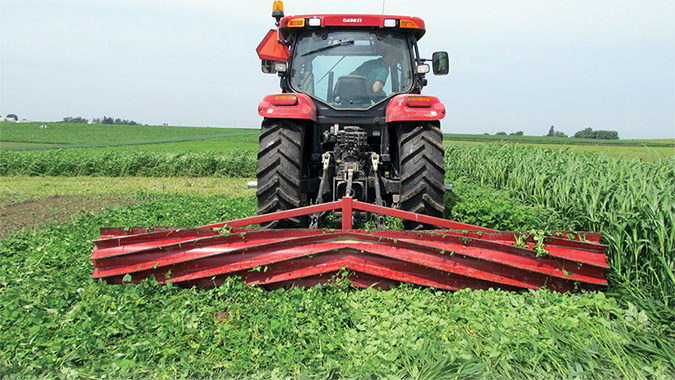No-Till Farmer
Get full access NOW to the most comprehensive, powerful and easy-to-use online resource for no-tillage practices. Just one good idea will pay for your subscription hundreds of times over.

Rolling and crimping tall cover crops can help no-tillers and strip-tillers plant into heavy residue, preserve moisture and, in some cases, reduce herbicide use.
That’s in addition to capturing the soil-building and protection benefits. But there are some good rules of thumb to follow for farmers to get the most out of this kind of system.
“Well-designed roller-crimpers can do a good job, but the implement itself is just part of the process,” says Ted Kornecki, an agricultural engineer at the USDA-ARS National Soil Dynamics Laboratory in Auburn, Ala. “You have to manage the cover crop for high-biomass, and time its growth to fit your spring planting schedule.”
Timing may be the most critical factor in successfully terminating a cover crop with a roller-crimper. The target crop must be in the correct stage of growth for roller-crimpers to work.
For cereal rye, Kornecki recommends the early-milk to soft-dough stage, when squeezing a new kernel yields a milky substance.
If rye is rolled too early in its growth, not only will there be inadequate biomass to create the dense mat of residue desired for weed control, the process probably won’t effectively kill the plants.
“The rye needs to be tall to create the carpet on the soil surface that keeps sunlight away from weeds,” says Kornecki, who has pioneered roller-crimper research in the U.S. “If you roll it too early, the rye still has a lot of power to survive — and short plants have a tendency to…